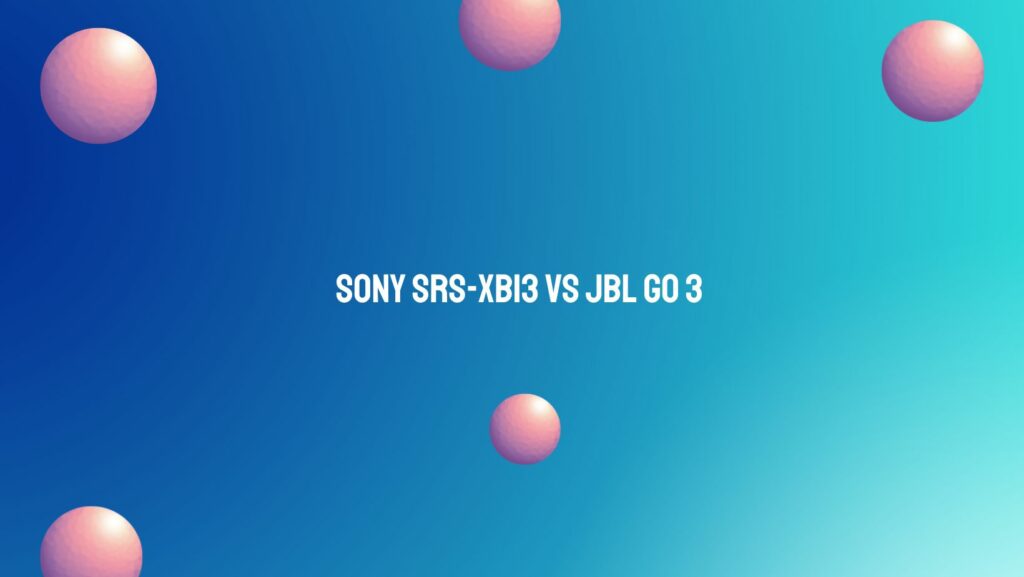In the realm of compact and portable speakers, Sony and JBL have emerged as formidable contenders, each with a reputation for delivering quality audio experiences. The Sony SRS-XB13 and JBL Go 3 stand out in this crowded space, offering users a balance between portability, design, and sound performance. In this article, we dissect the features of these two speakers to help you make an informed choice based on your preferences.
Design and Build:
Both the Sony SRS-XB13 and JBL Go 3 are designed with portability in mind, but their aesthetics and build differ significantly.
The Sony SRS-XB13 features a cylindrical design with a fabric mesh exterior, giving it a modern and understated look. Its compact size, accompanied by a detachable strap, makes it easy to carry on the go. The SRS-XB13 is also water-resistant with an IP67 rating, adding a layer of durability suitable for various environments.
In contrast, the JBL Go 3 adopts a sleek, oval-shaped design with a patterned grille, showcasing a contemporary and vibrant aesthetic. It maintains the compact form factor and is well-suited for users who prioritize a stylish and durable design. The JBL Go 3 is also splashproof, making it suitable for everyday use.
Sound Performance:
For their diminutive sizes, both the Sony SRS-XB13 and JBL Go 3 aim to deliver impressive sound quality, but they take slightly different approaches.
The Sony SRS-XB13, with its Extra Bass technology, emphasizes low frequencies, providing a punchy and dynamic bass response. Despite its size, the SRS-XB13 manages to maintain clarity across the mid and high ranges, ensuring an immersive audio experience.
On the other hand, the JBL Go 3 offers a balanced sound profile with a focus on clarity. Its 4.2-watt power output allows for clear vocals and a well-defined midrange. While it may not emphasize bass as much as the SRS-XB13, the JBL Go 3 still provides a satisfying audio experience, especially for users who prefer a more neutral sound signature.
Connectivity and Battery Life:
Both the Sony SRS-XB13 and JBL Go 3 feature Bluetooth technology for wireless connectivity, allowing users to pair them with various devices seamlessly. The SRS-XB13 supports Bluetooth 4.2, while the JBL Go 3 boasts the more advanced Bluetooth 5.1 for improved connectivity.
In terms of battery life, the Sony SRS-XB13 offers an impressive 16 hours of playtime on a single charge, ensuring an all-day audio companion. The JBL Go 3, with its slightly smaller battery capacity, provides around 5 hours of playtime, making it suitable for shorter outings.
Conclusion:
Choosing between the Sony SRS-XB13 and JBL Go 3 ultimately depends on individual preferences and priorities. If you seek a speaker with an emphasis on bass, a sleek design, and an extended battery life, the Sony SRS-XB13 might be the ideal choice. On the other hand, if you prioritize a balanced sound profile, stylish aesthetics, and a budget-friendly option, the JBL Go 3 stands as a compelling alternative. Whichever you choose, both models exemplify the continuous innovation and competition in the portable speaker market, offering users a range of options to match their unique preferences.


